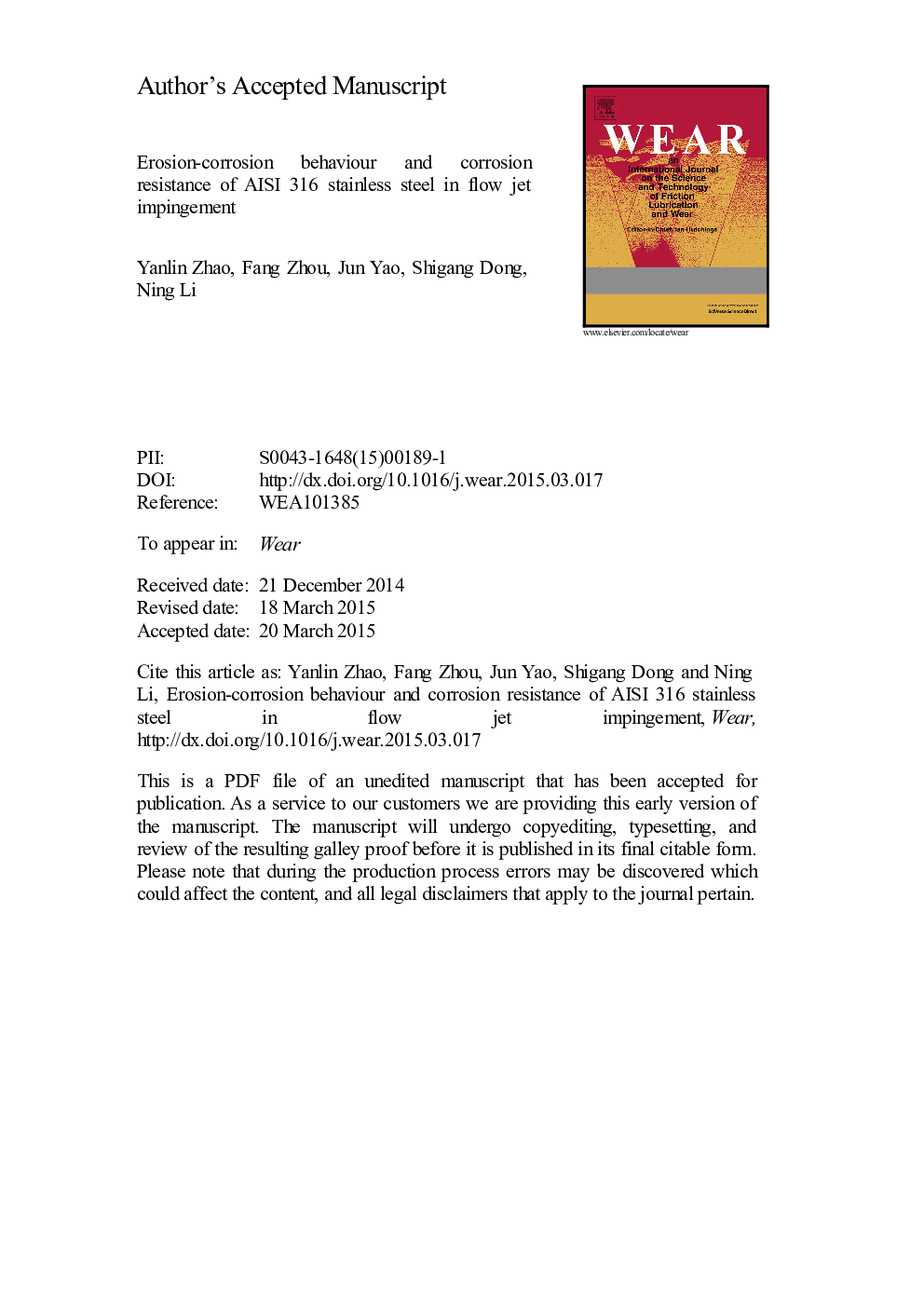| Article ID | Journal | Published Year | Pages | File Type |
|---|---|---|---|---|
| 7004430 | Wear | 2015 | 43 Pages |
Abstract
The purpose of this investigation was to document and understand the tribo-corrosive wear of AISI 316 (UNS S31600) stainless steel under high-speed jet impingement by a sand-liquid, two-phase flow. Wear was determined by weight-loss, the surfaces were characterized, and electrochemical measurements were also performed. Two different types of sands, silica sand and sea sand, were used in the experiments to investigate the effects of working time and chloride ions (from the sea sand). The cumulative weight-losses of the specimens increase with time. Upon the effect of particle size on weight-loss, it is found that the weight loss caused by the smallest particles, over a three hour time increment, decreases more slowly than that from other-sized particles. In addition, the weight-losses of the specimens increase with decreasing impact angle. Erosion from flowing sea sand caused more weight-loss than from flowing silica sand. From electrochemical measurements, the specimen impinged at a moderate angle (60°) shows the best corrosion resistance. The specimens subjected to flowing sea sand had worse corrosion resistance than those subjected to flowing silica sand. The specimen impinged by short time represents a passivation process on the anodic polarization behavior, but the passivation disappears on the specimen impinged by long time.
Related Topics
Physical Sciences and Engineering
Chemical Engineering
Colloid and Surface Chemistry
Authors
Yanlin Zhao, Fang Zhou, Jun Yao, Shigang Dong, Ning Li,
